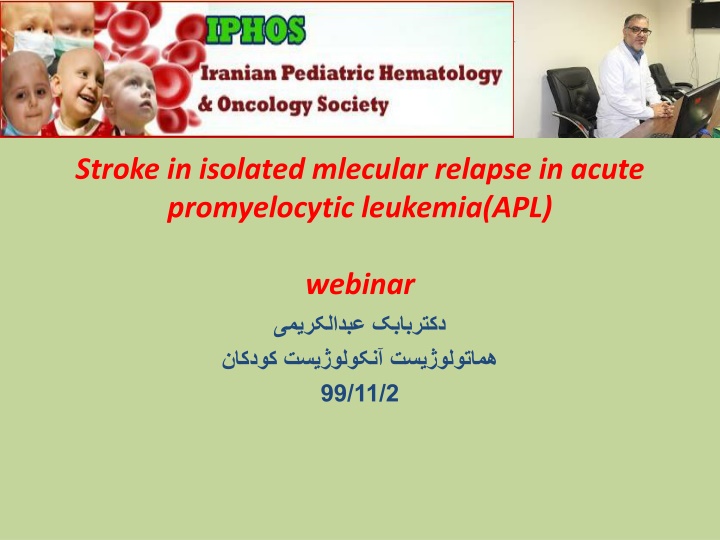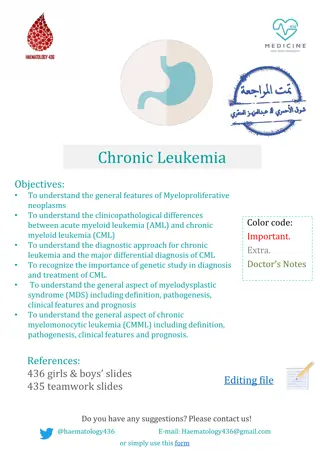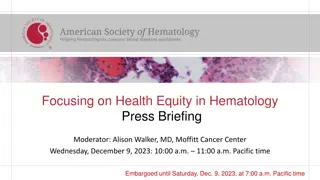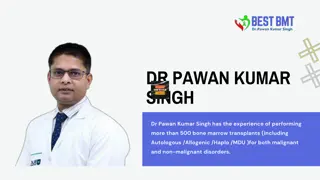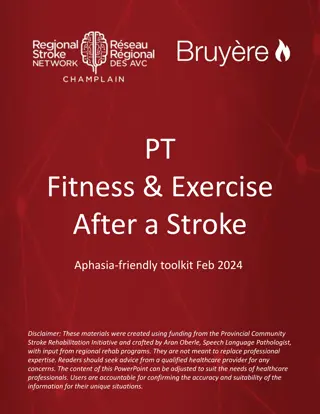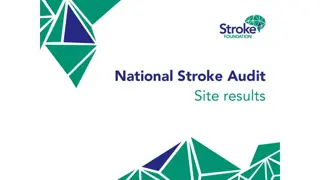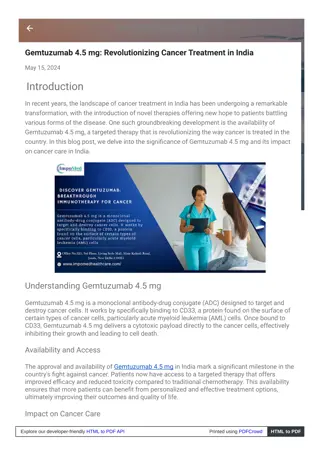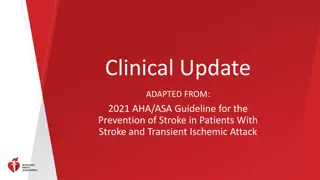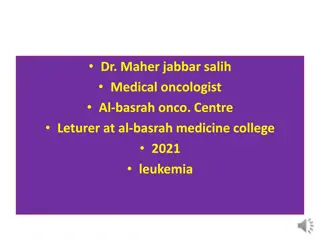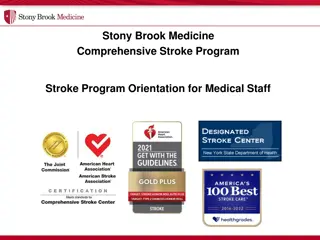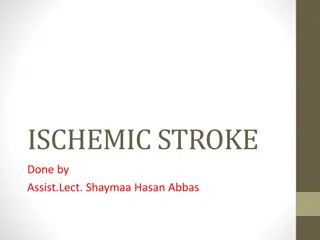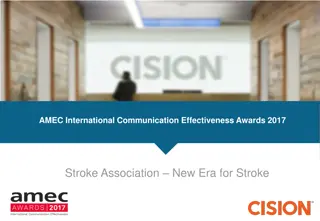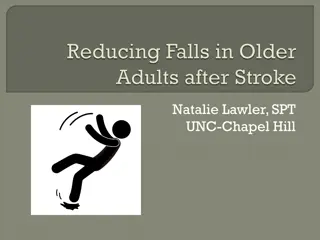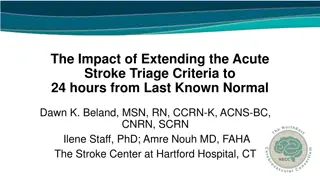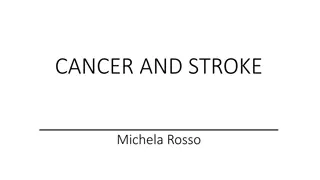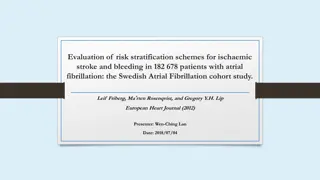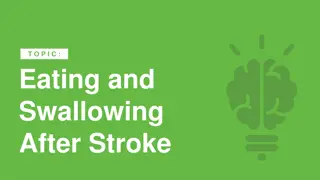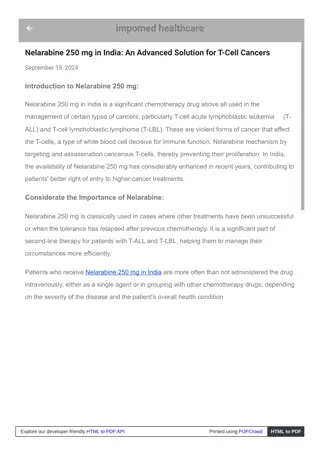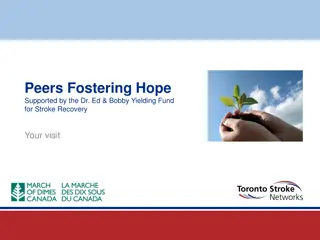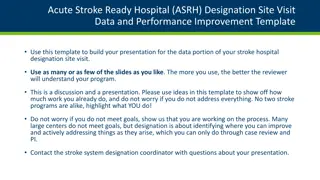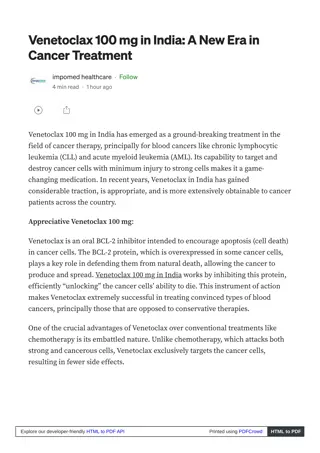Isolated Molecular Relapse in Acute Promyelocytic Leukemia: Stroke and Clinical Presentation
This case study discusses a 7-year-old boy with APL who experienced an isolated molecular relapse and presented with stroke symptoms. The patient's management, laboratory tests, brain imaging results, and novel aspects of the case are highlighted.
Download Presentation

Please find below an Image/Link to download the presentation.
The content on the website is provided AS IS for your information and personal use only. It may not be sold, licensed, or shared on other websites without obtaining consent from the author.If you encounter any issues during the download, it is possible that the publisher has removed the file from their server.
You are allowed to download the files provided on this website for personal or commercial use, subject to the condition that they are used lawfully. All files are the property of their respective owners.
The content on the website is provided AS IS for your information and personal use only. It may not be sold, licensed, or shared on other websites without obtaining consent from the author.
E N D
Presentation Transcript
Stroke in isolated mlecular relapse in acute promyelocytic leukemia(APL) webinar 99/11/2
CASE presentation (1) a 7-year-old boy with APL was periodically evaluated for BMA/B during maintenance therapy witht t)15,17)/PML-RARA transcript. BMA:no abnormal morphologic changes , PML-RARA transcript was positive in BM. BMA was repeated 2 weeks later t (15,17) again was positive without any evidence of morphological recurrence in the BM. FLT3-ITD :neg After 3 weeks of delay in admission (due to clincal symptoms of COVID- 19) he was hospitalized for right hemiparesis and speech disorder.
Ph/E: LOC(-) , slurrede speech (+) Neurologic exam :right hand paresia with 1/5 & right leg with 3/5 motor power Sensory loss(-) DTR: right bicepes:dec knee:dec Plantar:downward After initiation of DEXA & Enoxa speech & paraparesia corrected after 3 days.
Laboratory TESTS: WBC =2700 (N = 48, L = 52), Hb =12.2 platelet = 273000. PT and PT / INR were normal D-Dimer =4732 micrograms per liter. Fibrinogen: Normal LDH: Normal Other biochemical tests were normal.
Brain imaging: Brain CT : a new ill-defined hypodencity in the left region of the middle cerebral artery(MCA )as a stroke like area. Brain MRI and MR angiography (MRA) and DWI: Hypoperfusion in left hemisphere, asymmetric venous bulge insensitive weight imaging, and pruning of the left hemisphere peripheral arteries on MR angiography.
Patient management: 1.Dexamethasone 2 mg tds daily until slurred speech and hand paresia resolved then 2 days in week.(diffrentiation syndrome prophylaxis) 2.LMWH subcutaneous (Enoxaparin 2.000 IU. q12h) 3.ATO(0.15 mg/kg/d IV for 35 days) 4.ATRA 20 mg / m2/d(ECHO/ daily QTc +ca,p,mg,Na,k/Inderal ) 5.Idarubicin 12 mg/m2 on day 1,3,5 6.ASA:after discharge and enoxa discontinuation (between 2 ATO courses)
Patient novelty: 1.Isolated molecular relapse with non-hematologic clinical presentation 2.rare prevalence 3.Clinical thrombosis+subclinical fibrinolysis
Critical points: 1.D-dimer:H,fibrinogen:L- co-activation of thrombosis & fibrinolysis DIC/hemorrhagia 2.D-dimer:H,fibrinogen:N- fixed thrombosis/ischemia & then fibrinolysis 3.MRD monitoring in BM/PB is considered BY t(15,17) or PML- RARA transcript in APL every 3 months for 3 years. (Although peripheral blood (PB) PCR has good concordance with BM PCR at early stages of therapy, have shown an advantage for BM PCR after consolidation, with 1-5 log greater sensitivity than PB.)
3) Chemotherapy in isolated molecular relapse without any evidence of hematologic relapse is necessary, because isolated molecular relapse in APL is equal positive minimal residual disease(MRD) and need treatment intensification include reinduction with differentiating agents + chemotherapy & consolidation with differentiating agents +_allogenic stem cell transplant( SCT).
Stroke in AML- 2017
ATO experience in children APL ATO, +_ATRA, with relapsed APL (Ebinger et al, 2011; Au et al, 2012; Rock et al, 2014). Au et al (2012) oral ATO/ATRA+ cytarabine/idarubicin+ Maintenance therapy included oral ATO/ATRA for 2 years ATO + ATRA in front-line therapy (Mathews et al, 2010; Zhou et al, 2010 /Zhang et al, 2008). relapsed/refractory APL ATO+HSCT (Fox et al, 2008). relapsed paediatric APL ATO/ATRA + Chemotherapy / HSCT (Zhang et al, 2008/Bally et al, 2012). Antracyclin/Ara-C+ATO+HSCT; alive at 14 96 years from relapse (Creutzig et al, 2010).
Treatment algorithm for relapsed pediatric APL that occurs 18 36 months from initial diagnosis in hematologic relapse.
Our treatment plan: RISK:standard risk with 1 poor prognostic factor strategy:1: 1.reinduction by ATO+ATRA+Ida+Ara-C (PML-RARA transcript check) 2.consolidation 1- 3courses oral/IV ATO+ATRA(25+12) 3.consolidation 1- 4courses oral/IV ATO+ATRA(25+12) (28+3x 36+4x57days=388-400 d) strategy:2(traditional): 1.reinduction by ATO+ATRA+Ida+Ara-C (PML-RARA transcript check) 2.consolidation 1- 1courses IV ATO+ATRA(25+12)+BMT
Take home message We recommend periodic D-dimer,CBC diff,PT,PTT & PML-RARA transcript every 3 months ( detect hematologic/molecular recurrence). LMWH+_Cryo/plt base on thrombotic or fibrinolysis trend Antiplatlet agent /thrombolytic therapy are not recommended in APL
